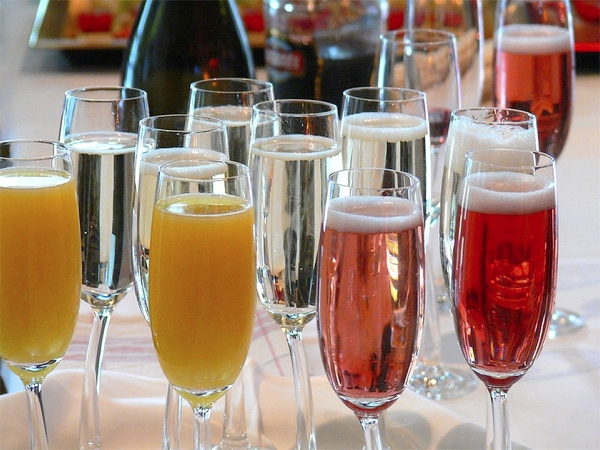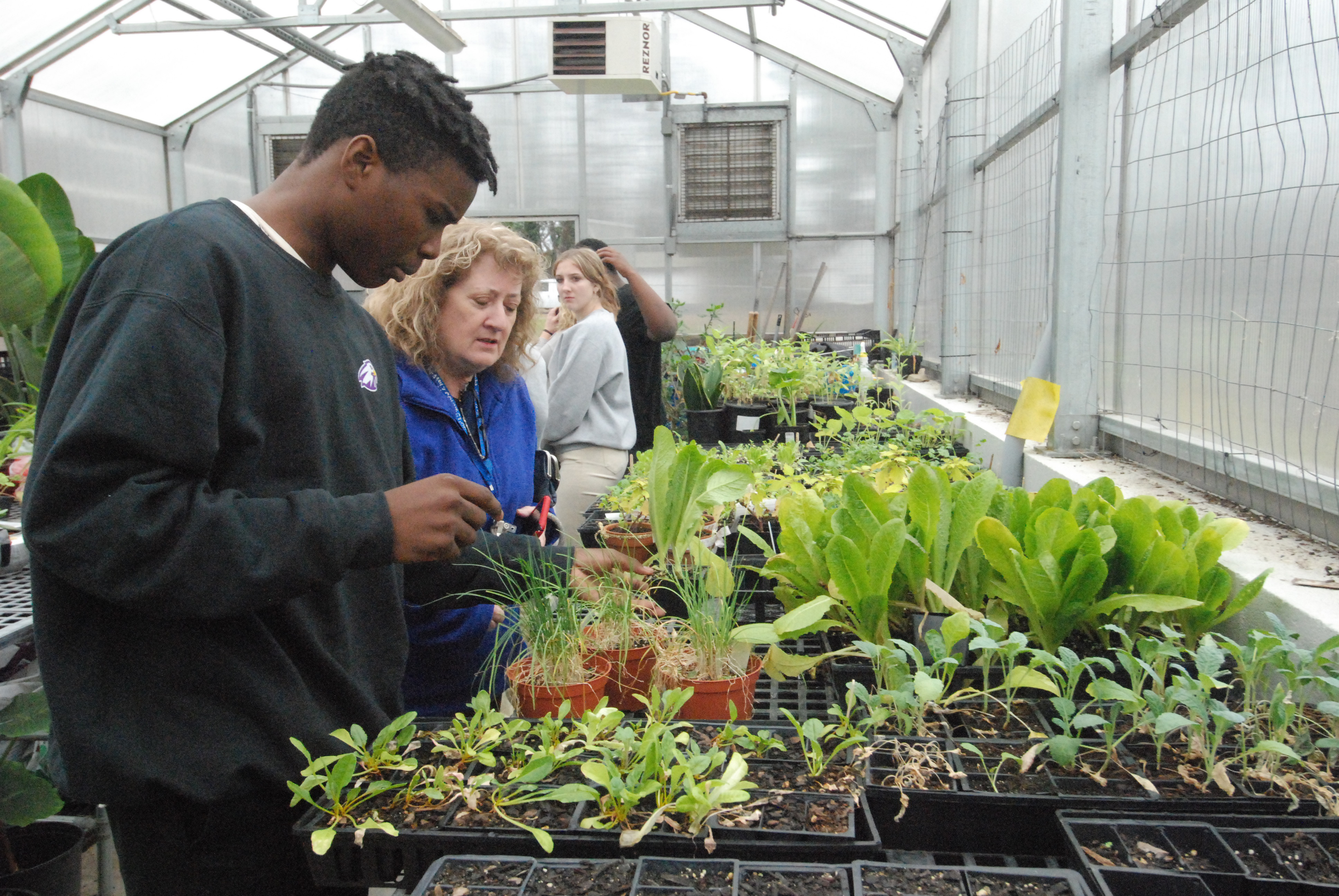Pop! Goes the celebration: Champagne cocktails for New Year’s Eve
Published 12:00 am Tuesday, December 29, 2015

- Champagne cocktails
By Daniel Neman
When Victor and Ilsa stride into Rick’s Cafe Americain in “Casablanca,” they do not order a drink with paper umbrellas or a vaguely dirty name. They don’t order an artisanal creation made from some obscure Estonian liqueur and acorns.
They order champagne cocktails.
Of course they do. No other drink approaches champagne cocktails in glamour. No other drink has their elan, their wit, their joie de vivre.
When stars walk the red carpet, they drink champagne cocktails — or at least they should. Champagne cocktails are what is served in private boxes at the opera — or at least they should be.
And they definitely should be served on New Year’s Eve.
There is nothing quite like champagne, from the satisfying pop of the cork to the tiny bubbles that rise effervescently from the glass to tickle the nose and delight the tongue.
A champagne cocktail does that one better.
The Classic Champagne cocktail is made with a sugar cube, a couple of dashes of Angostura bitters and a glass of champagne topped with a twist of lemon. It is elegance in a glass, a perfect blend of a crisp, dry wine softened with sugar, which is itself tempered by the bitters and the faintly tart aroma of lemon, all awash in delicate bubbles.
That’s what Victor and Ilsa were drinking, along with their nonfictional counterparts who went out for a night on the town at the Stork Club or 21 or El Morocco. They are what a certain sort of evening deserves.
But champagne cocktails have long since escaped the narrow bounds of what comprised the original drink. Any drink with champagne in it is now considered a champagne cocktail. The right combination of liquids can make a tantalizing concoction.
As in so many areas in life, subtlety is the key.
The big gun, so to speak, of champagne cocktails is the French 75. Created (in a slightly different form) in 1915 at the New York Bar in Paris, the drink adds gin, lemon juice and sugar to champagne. It’s a terrific combination, with the crisply dry herbal essences of the gin playing off the sweet and sour combination of lemon and sugar and given bright new life with the champagne.
With its dry sophistication, it slides across your tongue so easily that you might temporarily forget about the punch of the liquor. But this kick is how it got its name — the drink was said to hit you like a French 75, the 75mm gun that was so deadly during World War I.
Perhaps the queen of champagne cocktails is the Kir Royale, a more elegant and celebratory version of the Kir. Both were invented, or at least popularized, by Canon Félix Kir, a Catholic priest and resistance fighter during World War II who later became mayor of the French town of Dijon.
Kir was said to be a big booster in the local products of his region, and he was particularly fond of combining a white Burgundy wine, Aligoté, with crème de cassis, which has a flavor of black currants. Because of his association with the drink, it came to be known as Kir. When he wanted to serve something a little more special, he substituted champagne for the Aligoté, and created the Kir Royale.
Similar to the Kir Royale is the Nelson’s Blood, which is made by combining a bit of Tawny Port with champagne. It’s best not to think of it as a port spritzer, although that is actually what it is; it is a lighter, more festive version of port, the granddaddy of all after-dinner wines.
The name comes from what may actually be a true story. Lord Horatio Nelson was famously killed at the Battle of Trafalgar in 1805, though the British navy, under his leadership, otherwise won a decisive battle. To preserve his body on the way from Spain back to England, it was placed in a cask of either brandy or rum — various stories differ on this detail.
Some of the stories go on to suggest that the sailors, whether knowingly or not, drank the contents of the cask.
A stronger drink with champagne — and one that has no morbid tale associated with its name — is the Queen’s Cousin. With an ounce of vodka, plus Grand Marnier and Triple Sec, it is more of a cocktail cocktail than a champagne cocktail. It’s also clean-tasting and delicious, with a bit of lime juice and Angostura bitters to cut gently through the sweetness of the orange-flavored liqueurs.
The Grand Champagne Cocktail is a relatively recent invention, and it would be difficult to imagine Victor and Ilsa — or James Bond, for that matter — ordering one. But it is undeniably delightful, with Grand Marnier, honey and fresh strawberries all blended together and then stirred into champagne.
Perhaps the lightest, most refreshing of the champagne cocktails I tried is the Ginger Sparkler. You begin with a simple syrup made from freshly grated ginger, sugar and water and mix it into champagne or another dry, sparkling wine.
It’s a champagne cocktail. But you can think of it as an ultra-classy ginger ale.
Nelson’s Blood
Yield: 1 serving
1 tablespoon tawny port
3 ounces chilled champagne
Put port into champagne flute. Fill with champagne.
Classic Champagne Cocktail
Yield: 1 serving
4 dashes Angostura bitters
1 sugar cube or 1/2 teaspoon sugar
3 ounces chilled champagne
1 lemon twist (a thin strip of lemon zest about 2 inches long, twisted)
1. Soak the sugar cube with the Angostura bitters — you can put the cube in the bottom of a champagne flute and sprinkle the bitters on top or just splash the bitters directly onto the cube before placing in the glass. If you don’t have a sugar cube, place the sugar in the bottom of the glass and sprinkle with the bitters.
2. Fill glass with champagne and top with the twist of lemon.
Queen’s Cousin
Yield: 1 serving
1 ounce vodka
1/2 ounce (1 tablespoon) Grand Marnier
1/2 ounce (1 tablespoon) fresh lime juice
1 teaspoon triple sec
3 ounces chilled champagne
2 dashes Angostura bitters
Combine vodka, Grand Marnier, lime juice and triple sec in a champagne flute. Fill with champagne and top with Angostura bitters.
Recipe by thefiftybest.com
Grand Champagne Cocktail
Yield: 4 servings
2 ounces (4 tablespoons) Grand Marnier or other orange-flavored liqueur
4 teaspoons honey
4 fresh strawberries, tops trimmed
12 ounces (about 1/2 bottle) champagne, well chilled
In a food processor, process the Grand Marnier, honey and strawberries until smooth. Evenly divide this mixture among 4 champagne flutes. Fill the rest of the glasses with champagne.
Adapted from a recipe by Bobby Flay, via the Food Network
Ginger Sparkler
Yield: 8 servings
2 teaspoons peeled and finely grated fresh ginger
1/2 cup granulated sugar
1 (750 ml) bottle chilled dry sparkling wine, such as champagne, prosecco or cava.
1. Set a fine-mesh sieve over a small bowl; set aside. In a small saucepan, boil ginger, sugar and 1/4 cup water until syrupy, about 2 minutes. Pour through sieve into bowl, discarding solids (to store syrup, refrigerate in an airtight container for up to 1 week).
2. Pour 1 tablespoon syrup into each of 8 tall glasses. Top with champagne or sparkling wine and gently stir.
Recipe by Martha Stewart
Kir Royale
Yield: 1 serving
1 tablespoon crème de cassis
3 ounces chilled champagne
Put crème de cassis in a champagne flute. Add champagne.
French 75
Yield: 1 serving
1 1/2 ounces (3 tablespoons) dry gin
Juice of 1/2 lemon
1/2 teaspoon powdered sugar
3 ounces chilled champagne
1 lemon twist or cherry
1. In a cocktail shaker with ice cubes, shake together gin, lemon juice and powdered sugar. Strain into an 8-ounce old fashioned glass with ice cubes or a champagne flute (no ice cubes).
2. Fill with champagne and top with a twist of lemon or a cherry.






